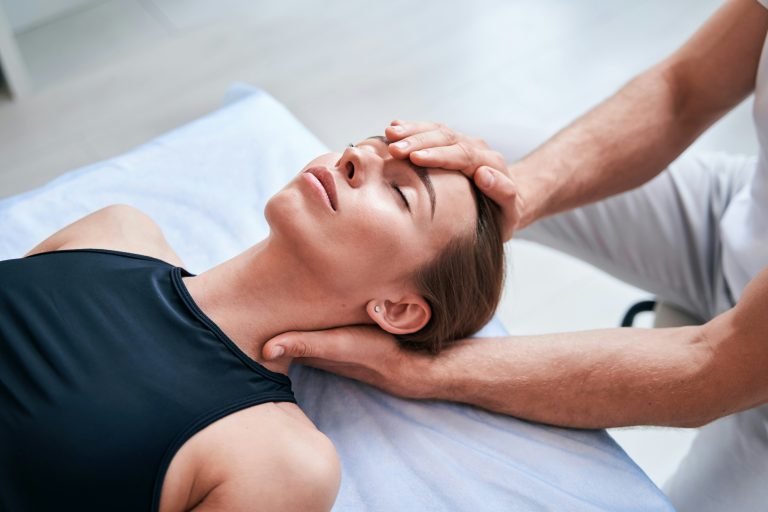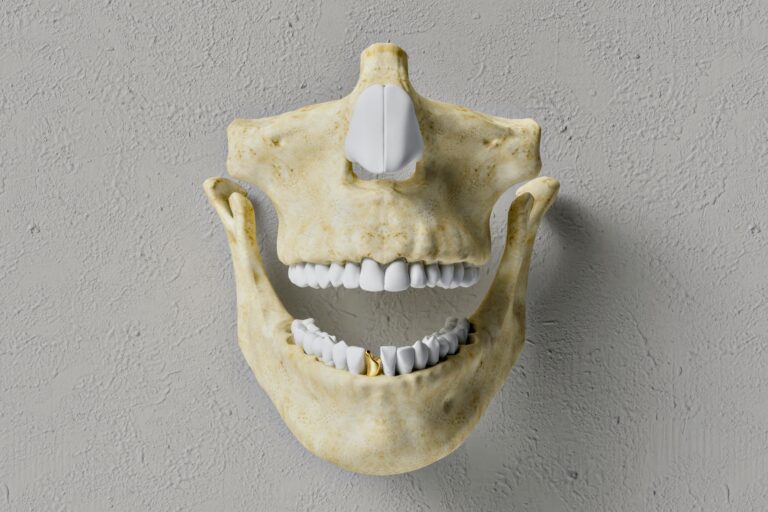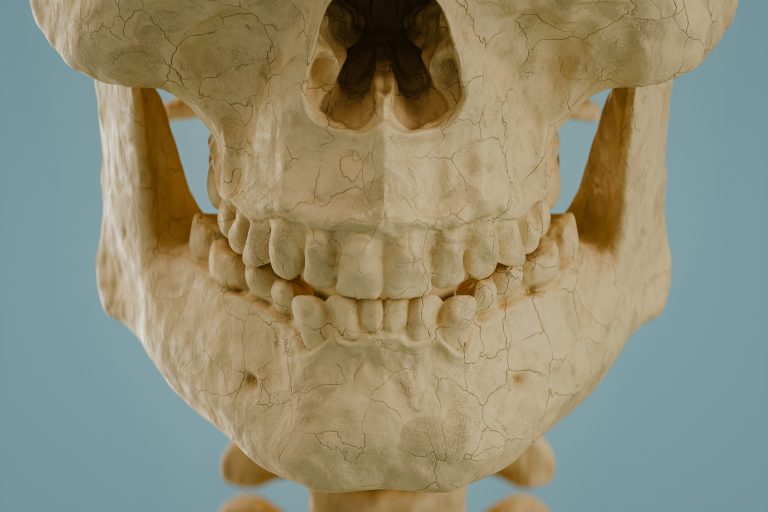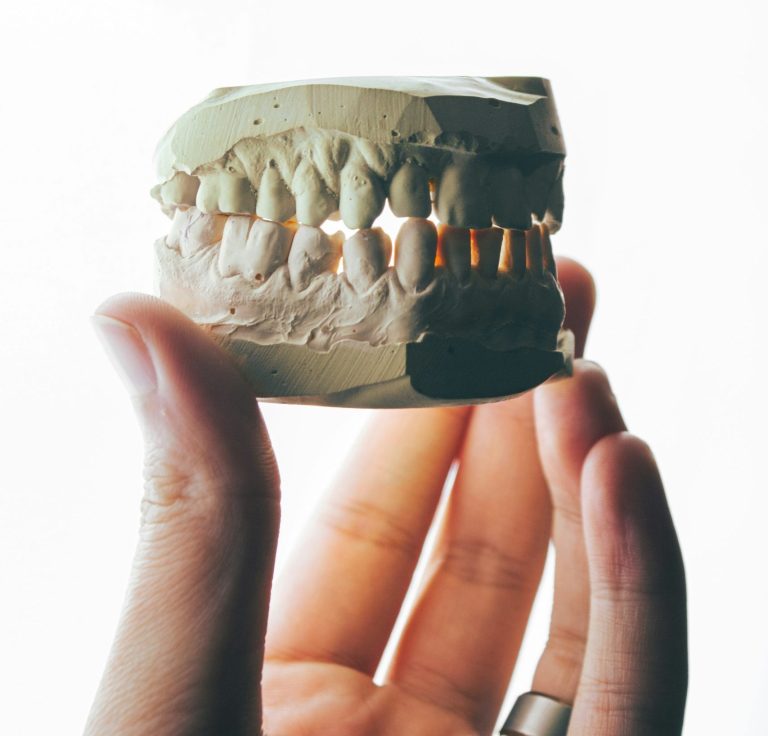Le bruxism is an often unrecognised but very common disorder, characterised by teeth grinding and/or the dental clenchingusually during sleep, but sometimes also during the day. In the long term, it can cause wear and tear enamel, jaw pain, chronic headachesand disorderstemporomandibular joint (TMJ).
While the exact causes have not always been identified, research shows that there are a number of factors that contribute to its development:
- Stress and anxiety The most common cause is probably involuntary muscle tension.
- Postural imbalances Improper positioning of the head and neck can affect jaw mechanics.
- TMJ disorders When misaligned, this joint can create a vicious circle of muscular tension.
- Certain medicines or stimulants Caffeine, alcohol and certain antidepressants can accentuate symptoms.
- Sleep disorders Bruxism: sleep apnoea or frequent awakenings can exacerbate nocturnal bruxism.
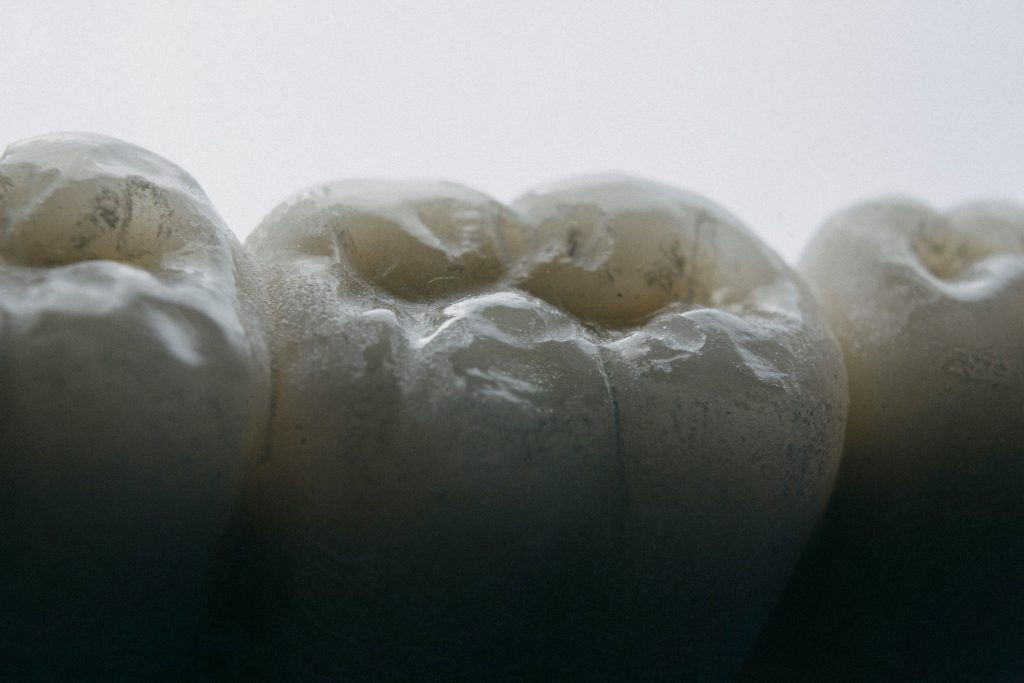
The problem with bruxism is that it acts in silenceThis can last for years before the damage is visible: worn or cracked teeth, headaches, otalgia (pain in the ear), and can lead to impaired quality of sleep.
Good care often combines several approaches:
- consultation with a dentist to rule out and treat a dental problem;
- if tooth wear is significant: prescribe a night splint;
- stress management;
- improved posture and functional re-education with a physiotherapist specialised in cervico-maxillo-facial.
With this in mind, a number of simple exercises can help to reduce muscle tension and limit episodes of bruxism.
After analysis, two exercises in particular stand out for their effectiveness and safety.
Exercise 1 - Active jaw relaxation
The aim of this exercise is to re-educating the brain maintain the jaw in a physiological resting position, reducing tension in the masticatory muscles and pressure on the TMJ
How to do it :
- Sit comfortably with your shoulders relaxed.
- Close your mouth gently, leaving a small gap between your upper and lower teeth.
- Place your tongue slightly against the roof of your mouth, just behind your upper teeth. The lips should be touching.
- Breathe deeply, consciously relaxing your jaw with each exhalation.
Frequency : 3 to 5 times a day, especially when you notice you are clenching your teeth.
Profit : This exercise helps to break the permanent clenching reflex and establish a neutral position that protects the TMJ and the teeth.
Exercise 2 - Masseter muscle stretch
The masseters are the powerful muscles on either side of the jaw. In people suffering from bruxism, they are often contracted.
How to do it :
- Gently open your mouth until you feel a gentle, painless stretch.
- Keep this open for 5 to 10 seconds.
- Slowly close your mouth and release.
- Repeat the operation 5 times.
Tip: You can accentuate the stretch by applying sustained pressure to the muscle with your thumbs.
Profit : This exercise reduces muscle tension and improves jaw mobility, reducing symptoms associated with bruxism.
Exercise 3 - Patient education and (bad) habits
Our everyday habits can be harmful to our jaw. We need to be aware of these so that we can correct them and improve our posture.
Here are a few tips to help you avoid over-stimulating these masticatory muscles, which are already very tense:
- Do not chew,
- Don't nibble,
- Don't bite your nails,
- Do not use your hand to support your chin,
- And, above all, remember to rdrop your jaw.
Why do these exercises work?
Unlike more aggressive movements or poorly performed deep self-massages, these two techniques can be used in the same way. safe, gentle and easy to integrate into everyday life. They aim to teach your jaw to relax againThis is essential to break the tension-tightness-pain cycle.
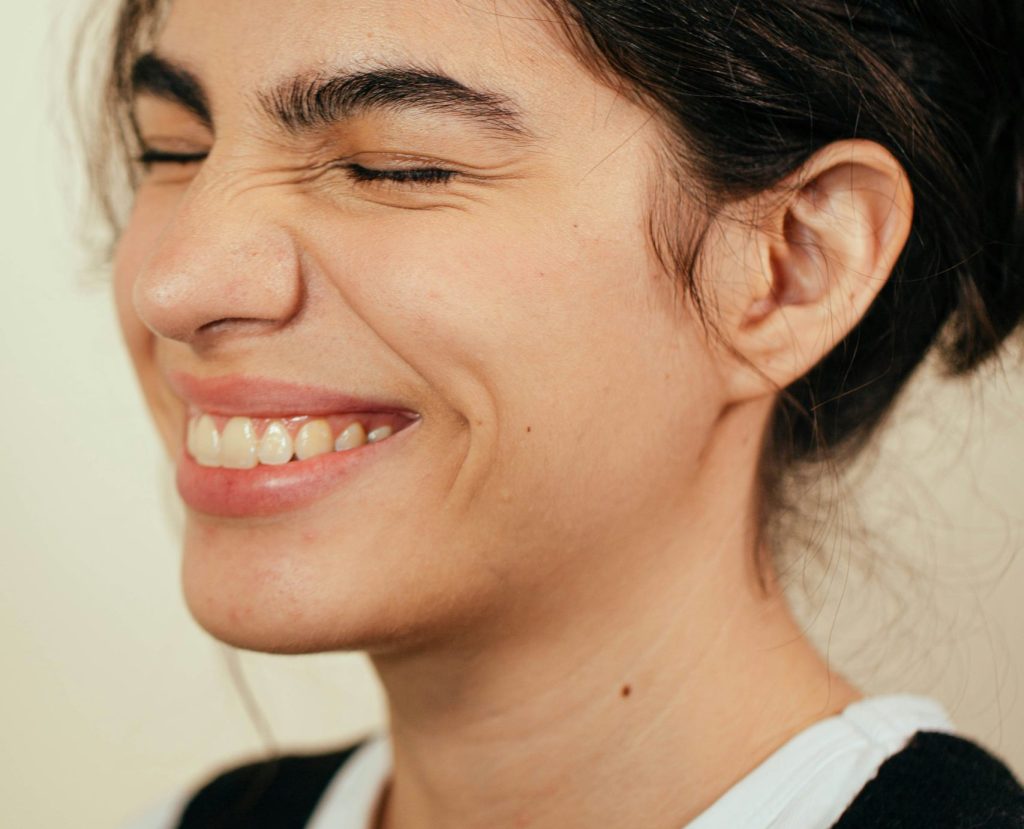
The key role of cervico-maxillo-facial physiotherapy
Although these exercises are beneficial, they are even more effective when they are integrated into an overall programme. personalised physiotherapy programme.
The specialist physiotherapist assesses :
- overall posture (head, neck, shoulders),
- ATM mobility,
- muscle tone,
- and daytime and night-time clamping habits.
Using targeted manual techniques, guided stretching and postural work, it helps to reduce pain, prevent tooth wear and improve sleep quality.
In a nutshell:
Bruxism is not inevitable. By combining awareness, simple exercises and professional monitoringIt is possible to considerably reduce its effects. Your jaw, your teeth... and your night's sleep will thank you.

